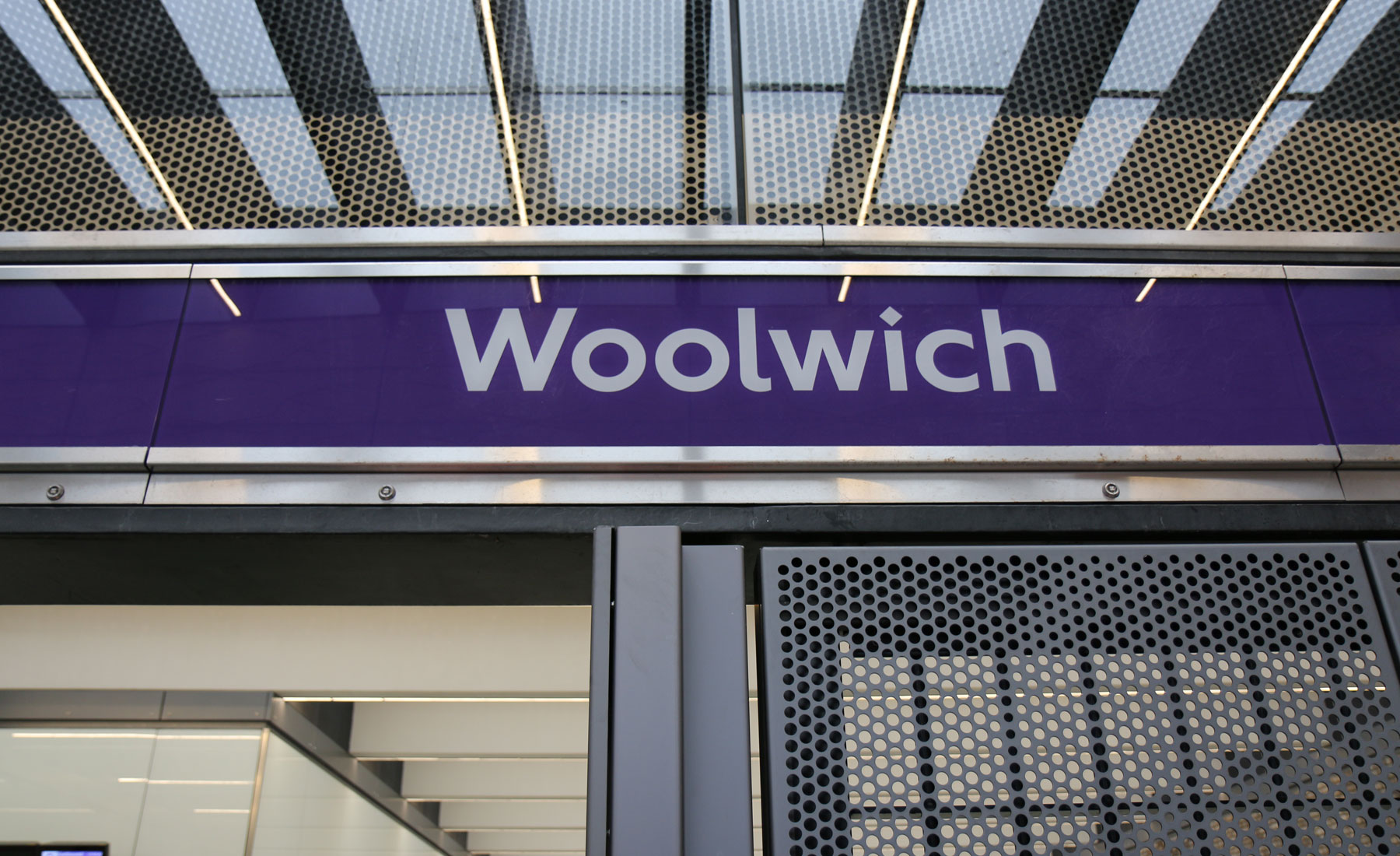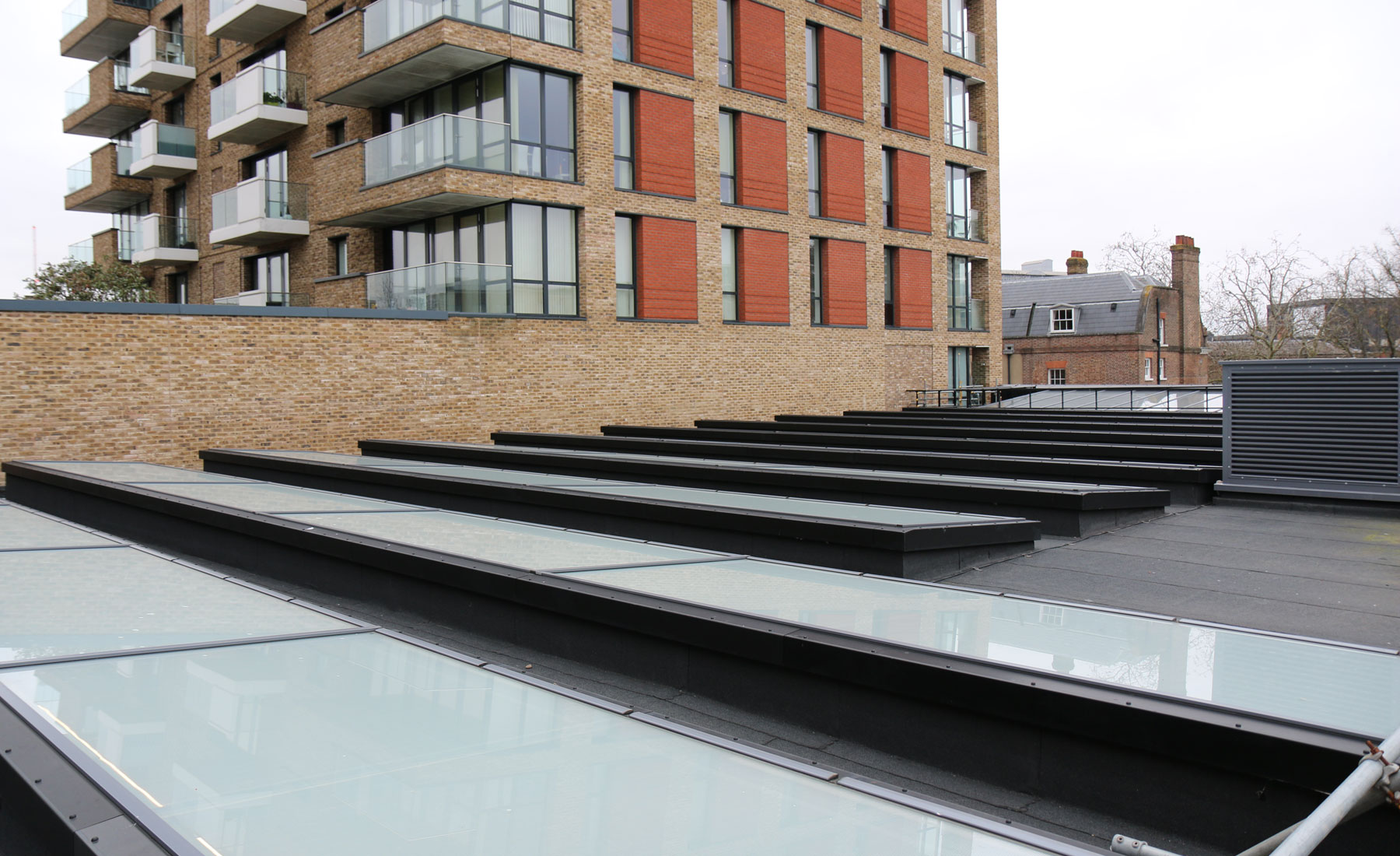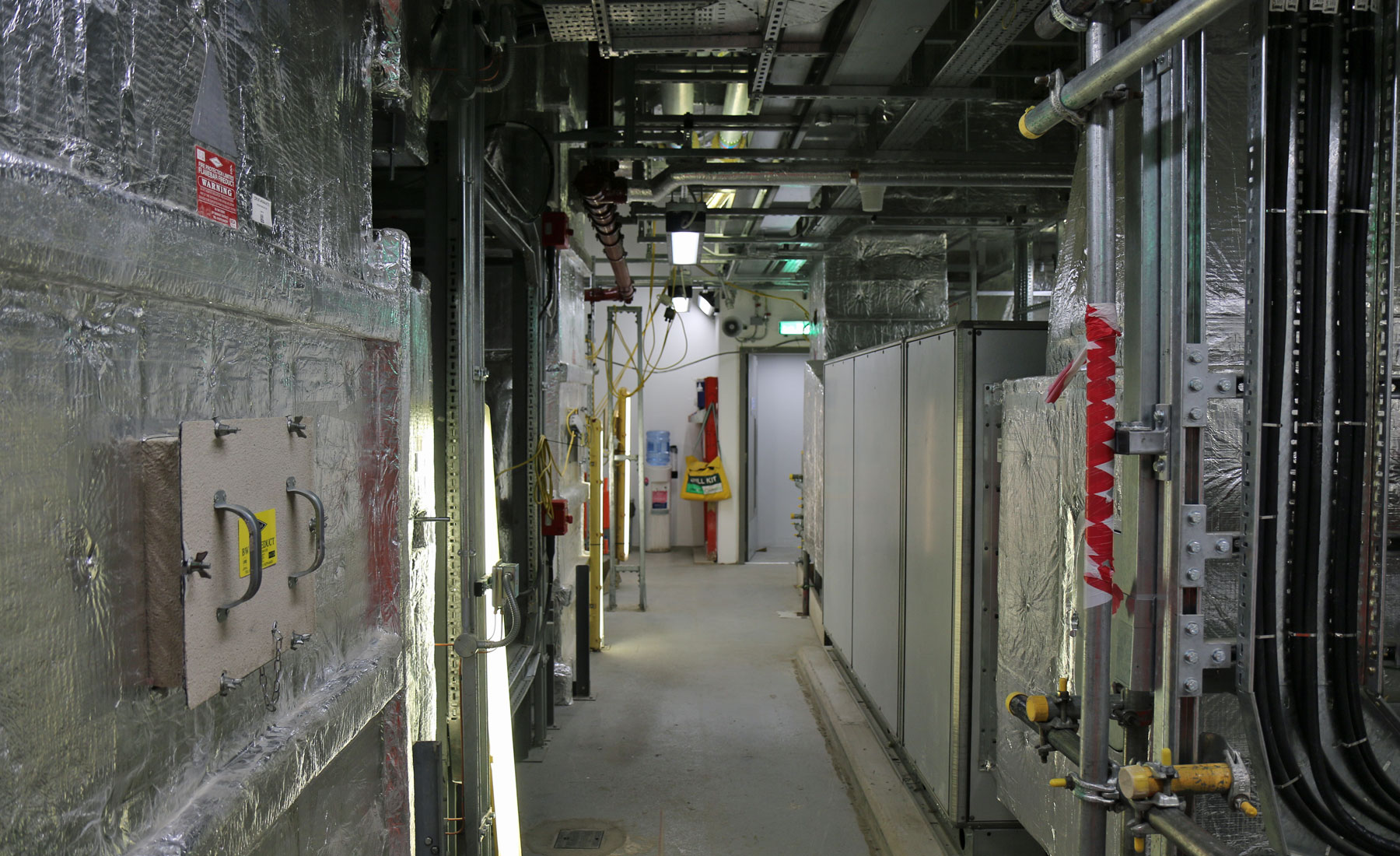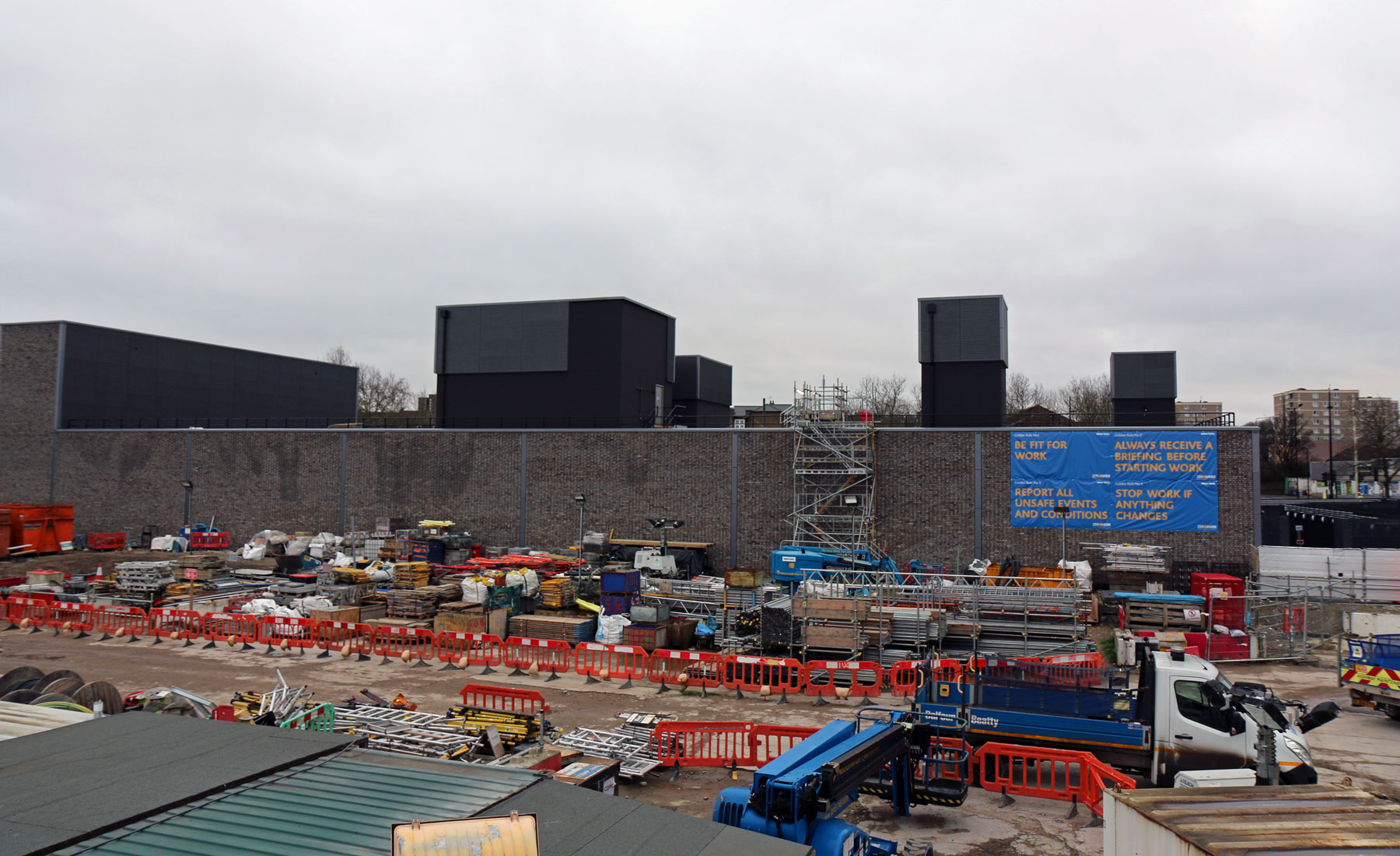There’s a railway station on the future Elizabeth line that was never supposed to exist — the one at Woolwich.
Woolwich was never intended to be a stop on the Elizabeth line, but when the Crossrail project was given the go-ahead, the glaring gap on the line was increasingly obvious to most people.
Even before Crossrail was approved, pressure was growing for Woolwich to be included, and apart from local regeneration benefits, it was argued that the station would reduce congestion on the mainline into London Bridge.
In 2006, the Crossrail Select Committee gave its support to a station to be added at Woolwich, noting that a Woolwich station had a much better benefit/cost ratio than the Crossrail scheme as a whole.
With the redevelopment of the former military arsenal site into blocks of flats by Berkeley Homes, it was very much to their benefit to have a large transport service right next to their new development.
In 2007, the government said that a station could be built at Woolwich if someone else picked up the extra costs.
However, it took until February 2011 for a deal to be agreed with Berkeley Homes to construct the station box, but no more, and it had to be funded locally without affecting the overall budget for Crossrail. Although the station box was largely completed in March 2013, it was still not entirely sure when, or even if, it would ever be a working station.
It was finally agreed in July 2013 to fund the fit-out of the station so that Elizabeth line trains would stop here, rather than just driving through an empty concrete void. The fit-out, put initially at £54 million was funded by Berkeley Homes, the Royal Borough of Greenwich (via a GLA grant and local developer contributions), and TfL, although that preliminary estimate ended up nearer to £125 million by 2018.
Balfour Beatty was given the fit-out contract.
The main construction of the 276m long box was carried out by Byrne Bros which included the heavily reinforced deep concrete sections for the base and roof slab of the station box, and the podium transfer superstructure.
The end result is a long box underground, with a large block for ventilation and access at the eastern end, and the main station entrance at the western end.
The entrance block is freestanding and surrounded on the rear sides by a wall that’s been decorated with images from a Dead Man’s Penny.
The entrance though is dominated by the decorative bronze cladding across a wide minimalist frontage which gives the entrance a sense of presence in the area which otherwise would have risked being overwhelmed by the clusters of flats above the rest of the station box.
There will be a “retail unit” next to the station, so expect the usual brand of high-street coffee chain to take up residence.
A minimalist, straightforward design will provide entry into the station from a single 30-metre wide bronze-clad portal with natural light entering the station through the station entrance and ticket hall ceiling. The decorative motif around the entrance is based on the rifling profile that was milled inside guns to give a spin to bullets. The normally minuscule pattern has been exploded in size to create the pattern for the station building.
Some of you might spy something interesting in the Woolwich name sign above the entrance.
Inside the station, the dominant feature of the ticket hall on entry is the brick detailing, which takes its design from the local Arsenal buildings, not just the colour, but the mortar, size and even the manufacturing methods.
Daylight streams in through asymmetric beams above, and these present a white appearance on arrival, but a very dramatically different “dot-matrix” design when leaving.
The glass in the ceiling isn’t just glass, but super strong glass. As the roof is overlooked by blocks of flats, just like the Spanish Inquisition, no one expects anyone to throw something exceptionally large and heavy over the balcony, but the glass has to be designed to survive if that did happen.
The ticket gates are now active, so your correspondent got to tap into an Elizabeth line station at last, and it’s thought that the first live tap-in on an Elizabeth line station took place here at Woolwich last year.
The escalator space continues the brick design, down to the platforms, where there’s a major change in appearance.
A long line of concrete pillars, wrapped with bronze covers dominates the space. It looks rather more impressive in the flesh, and the coloured belts that wrap around them are another nod to the area’s military heritage – being the colours of the belts worn by a couple of the local regiments.
The rest of the platform decoration is being left with the concrete exposed, which is going to generate the usual mix of comments ranging from “I like it” to “why is it unfinished” when the station opens.
The thickness of the pillars is also a reminder that while this is a shallow box in the ground, there are now several blocks of large flats right on top. The ceiling lights are surrounded by acoustic dampers to reduce noise in the station.
Considering that the station was added to the Elizabeth line as almost an afterthought, without a massive budget to pay for it, the overall effect of the bronze detailing is almost up-market, and a long way from the rather pre-pack appearance of recent London Underground station upgrades, being rather grey with spartan use of blue enamel panelling.
As with the other stations, a lot of space is given over to the back of site facilities, mechanical and electrical, ventilation systems, and emergency access in case of problems. Some of the rooms look not unlike a satellite fabrication plant with everything covered in reflective foils — in space to protect from the sun, but down here to help reduce heat which might have otherwise required even more ventilation systems to be built.
At the moment, while the public side of the station looks complete, a lot of work is still going on behind the scenes to get regulatory sign-off. Issues such as applying some 10,000 labels to the equipment and miles of cabling to say it has all been safety and fire qualified.
All the documents need verifying, to ensure what has been built matches what the specifications demanded. Meanwhile, the surface works continue to be reduced as the main constructions are complete, so site hoardings can be pulled back to release more space back to the public.
A major change took place in the middle of last year when the large open park space in front of the station entrance was returned to the public and made getting around the housing development much easier.
Over on the eastern side of the station is the ventilation and emergency access to the station. The block has also been designed to be built upon, with a raised podium supporting more tower blocks. In total, they expect to build 5 towers on the Armourer’s Court site once it has been vacated by the Crossrail construction teams.
A lot has been written over the years about how transport services attract regeneration, and while a lot has indeed happened along the route the line will take, it’s probably at Woolwich and next door Abbey Wood where the biggest changes are taking place.
The huge housing development at the Royal Arsenal was going to be much smaller until the deal was done for the Elizabeth line to have a station here. Other developments in the town centre are also jumping on the bandwagon that the Elizabeth line will bring to the area.
To put some context on that, for someone living in Woolwich to get to, for example Canary Wharf over the past decade would have seen their journey get much quicker.
- Before Woolwich DLR opened: 35 minutes
- Today: 20 minutes
- When the Elizabeth line opens: 7 minutes
That’s a considerable transformation in how connected Woolwich has become, with fast and regular services into Canary Wharf and central London.
Or as your correspondent put it, having recently moved to the area — I will be able to get from my flat to Waitrose in under 10 minutes.
Site access was thanks to Neil and Andy from Crossrail.


















Font the life of me, I can’t work out what the something is in the Woolwich sign, but I am interested enough to know. The ‘o’ looks the right shape and the ‘i’ has the regulation diamond dot, so wot is it please?
I think it’s the “l”. The name is in a sans serif font but the “l” has a curve at the bottom – possibly representative of a flintlock pistol.
It looks like the usual typeface to me, including the l. It’s presumably Johnson100.
However aren’t the signs above entrances normally in upper case? It’s backed with Elizabeth Line purple too, rather than the usual blue.
Ian you could do a sep piece on stations that never/almost existed:
– North End Road on the Northern line
– Stratford ‘International’ (that has never seen an international train stop there)
– Cannon St, Fenchurch (Fleet Line; two station boxes built etc)
Well done my flying friend. I do wonder if I’m bone from ear to ear sometimes. Trying too hard. A capital error. Thanks
I still find it ridiculous that this station, being entirely within the Royal Arsenal area of Woolwich is called… Woolwich.
Yet the Main Line and DLR stations (that are annoyingly quite a long distance away and won’t be an easy interchange) are squarely in the town of Woolwich. And are both called… Woolwich Arsenal.
As there is a walk between the two, it was decided to give them separate names – as for the distance, it’s not “a long distance” but less than 2 minutes. There are tube stations with longer interchanges between platforms.
The station should be renamed ‘Royal Arsenal Woolwich’